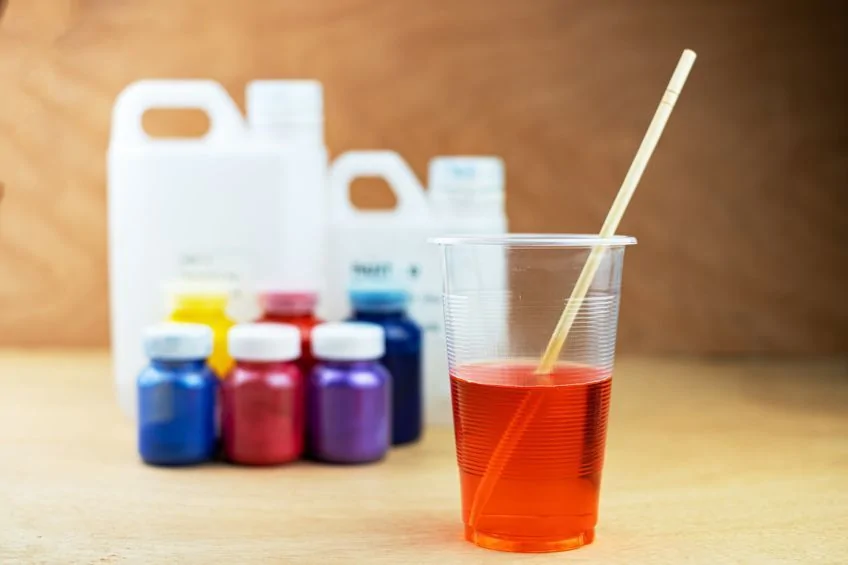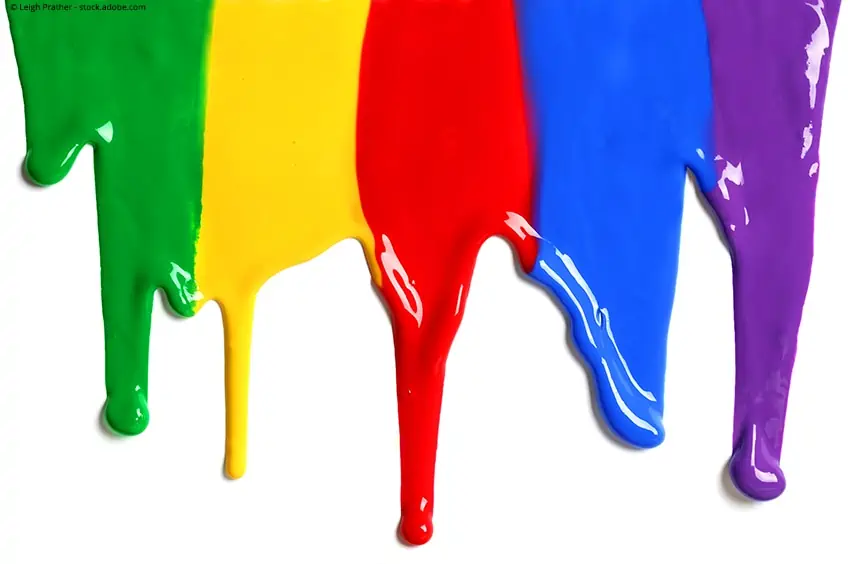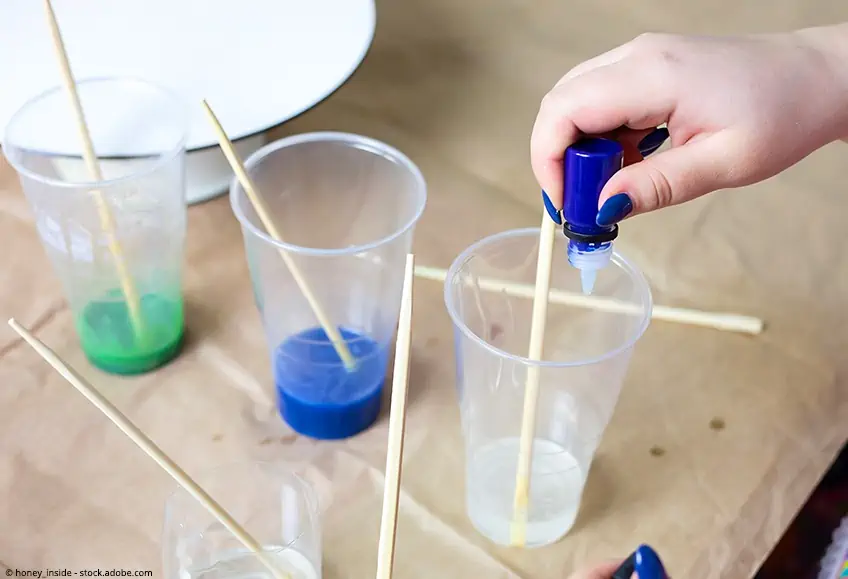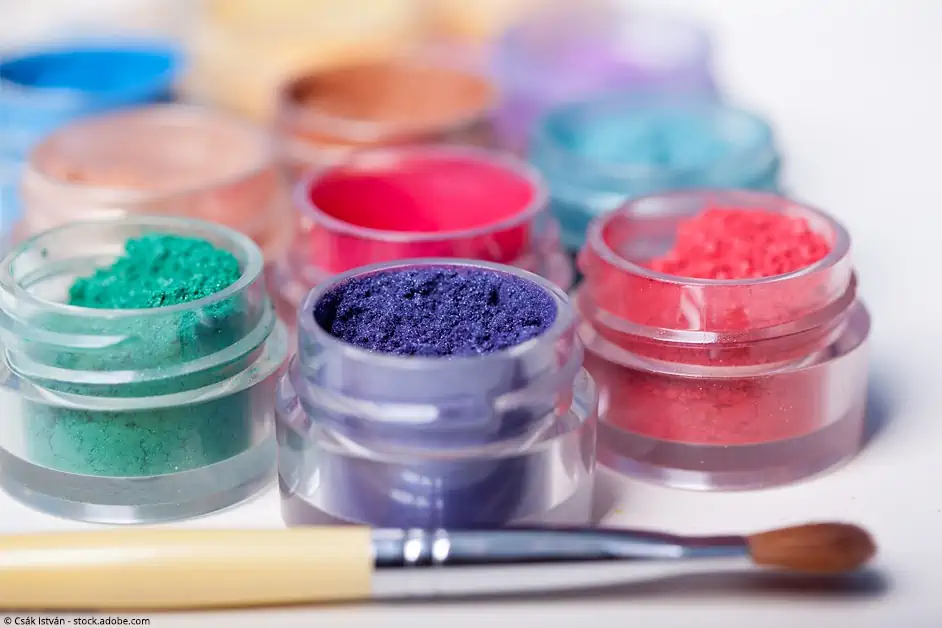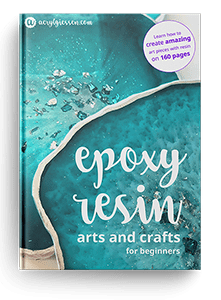How to Color Resin – The Best Coloring Products for Epoxy
This post may contain affiliate links. We may earn a small commission from purchases made through them, at no additional cost to you. You help to support resin-expert.com
Epoxy resin is very suitable for coloring it and is therefore often used by artists, craftsmen and do-it-yourselfers. Epoxy resin is usually transparent to crystal clear and this is also desired for some applications, for example to cast in objects. For many other applications, however, it is useful or desired to color the liquid.
Table of Contents
Which Colors and Pigments are Suitable for Resin?
There are many color media on the market. However, not all of them are suitable for coloring resin. Especially if water is contained in the inks, the mixing ratio changes and the mass may not harden or dull spots may appear. Light resistance is another important criterion.
The following inks have proven themselves and can basically be used in all epoxy products:
Color Pigments for Epoxy Resin
Color pigments are a safe way to color resin. If you use high quality pigments, you only need a small amount. Color pigments in powder form do not dissolve completely, resulting in an exciting, slightly granular optical effect. We have summarized the best products in comparison:
Liquid Color Concentrate
Liquid color concentrate can be mixed very easily with epoxy and dissolves completely, giving a very even color. We have also summarized the most proven products in the comparison
The Most Important Tips for Coloring Epoxy Resin
The mixing ratio is a very important factor with resin. If something changes in the composition between resin and hardener, unforeseen problems can occur. The addition of color changes the composition, so there are a few points to consider.
Coloring Epoxy Resin – Tutorial
Get the best results with this step-by-step guide:
- Provide all materials, since the time factor always plays a role when working with resin
- Cover your workplace cleanly so that no traces are left behind
- Wearing nitrile gloves, protective goggles and a breathing mask is strongly recommended
- Resin and hardener are carefully mixed in the correct ratio. A sufficient mixing is important.
- Then mix the ready paint into the epoxy resin. Start with a small amount of color pigments or liquid color concentrate and mix well. Repeat this step until the desired color intensity is achieved.
- Be careful not to add too much color, as this will change the mixing ratio. The rule of thumb is a maximum of five percent.
Epoxy Resin Color: All Color Media Presented in Detail
Paste-like Consistency / Liquid Colors
Special Colorants for Resins
There are some liquid colorants specially developed for use with resin. They are very suitable for dyeing. Here is one of the best known ResinTint from the manufacturer ArtResin, which offers highest quality and is extremely productive.
- 15 Vibrant Colors, usable with all kinds of epoxy resin
- Non-toxic and odorless
- High Concentrated Resin Pigment, easy to use
Acrylic Paint
The acrylic paint consists of color pigments, binders and water as well as other additives for durability, depending on the manufacturer and product. We do not recommend the use of acrylic paint, as the additives and water contained in it can lead to unforeseen results. In addition, one often gets a dull surface or streaks.
Alcohol Ink
Ink is usually based on water as a solvent, but there are also alcoholic inks. Both variants offer an extremely high pigmentation, so that only a few drops are sufficient to color the epoxy resin. The light fastness of Alcohol Inks is also generally less good, making them unsuitable for outdoor use. Alcohol Inks are transparent and highly concentrated.
- Very high concentrated Alcohol Inks from Let's Resin
- 14 vibrant colors
- Works perfectly for Resin and for all Alcohol Ink techniques
Airbrush Paint
Airbrush paint has proven to be very suitable for combination with epoxy resin. Here, however, you should pay attention to high-quality products, as only here the color concentration is sufficiently high. An extremely recommendable product here are the airbrush colors from Aerosol by Schmincke.
- 8 different, iridescent airbrush paints
- Very high brightness and highly pigmented
- Shimmering metallic look
Oil Paint
Due to the lipids it contains, oil paint cannot be mixed with casting resin, as the liquids do not combine with each other and the result is lump formation.
Watercolors
Watercolors are generally not suitable in combination with resin. The main reason is the low pigmentation – the color simply does not color enough. So an extremely large amount of watercolor would be necessary to achieve a sufficient coloration. The hard consistency also means that the paint cannot really be mixed in.
Color Pigments and Powdery Additives
Color Pigments
Color pigments are available in different versions: From normal, matte colors to metallic pigments that shimmer. It is important to note here that the pigments have a high light resistance so that they do not fade. There are some established manufacturers of color pigments which offer a high quality. Noname products should definitely be avoided here.
- 24 Colors Mica Powder Set with each color 0.35oz
- Made from vivid and vibrant natural ingredients and widely used in handmade crafts
- Non-toxic and Premium Quality, does not fade or oxidize
Glowing Pigments
For the additional wow-effect you can also use additional luminous pigments which glow in the dark. There are both pigments that glow under black light and those that are “charged” by UV light and then glow in the dark.
- Premium quality, long service life of more than 10 years
- Non-toxic, non-radioactive and safe to use
- 12 vivid colors glow in the dark powder
Glitter Powder
You can also create exciting effects with glitter powder in all variations: From classic metallic glitter to holographic glitter, there are no limits to your fantasy. These do not color your casting resin, but give your works an additional eye-catching effect.
- Ultra Sparkle Holographic Glitter Powder
- 15 Colors Fine Glitter each bottle is 0.35 oz
- Made with high-intensity pigment and holographic shine, 100% safety and easy to use
Can Epoxy Resin also be Painted with Color?
Yes, this is possible. However, the use of a high-quality two-component paint is recommended, for example a car paint. We have a separate tutorial on how to paint on resin.
There are, however, applications where it makes sense to paint, for example in terrariums or aquariums.


